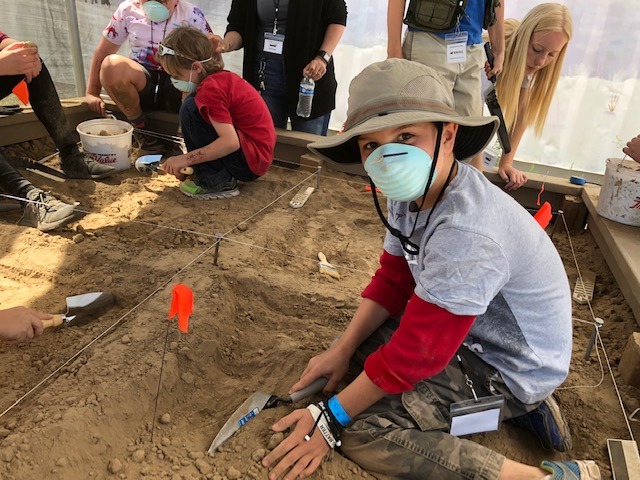What if we told you that Mammoths roamed Washington 16,000 years ago? What if we told you that you and your family could see it for yourself?
The Wenas Mammoth Foundation (WMF) prides themselves on doing just that. Since 2005 the organization has welcomed the community, from archaeologists to kindergartners, to visit their property to dig for and examine Mammoth bones. Why? Because they love earth science and think you should too.
When we first discovered the mammoth—although we usually tell people it found us—we knew it was an opportunity to get the community involved in earth science. We wanted it to be easy to access and thought it should be shared.
Bronwyn Mayo, WMF co-founder and program manager
The mission of WMF is to promote, preserve, and utilize the Central Washington Wenas Creek Mammoth Dig Site, and its natural earth history, to inspire K-12 youth to develop a passion for learning local earth science, encourage curiosity, and develop critical thinking skills from evidence.
When we first discovered the mammoth—although we usually tell people it found us—we knew it was an opportunity to get the community involved in earth science. We wanted it to be easy to access and thought it should be shared
“It isn’t so much excavating the bones, but showing the community what the world was like back then,” said Bronwyn Mayo, co-founder and program manager of WMF. Their unique and meaningful learning opportunities include the Mobile Educational Exhibit and educational program, classroom presentations, hands-on activities and online courses. Their paleontology, archaeology and geology camps became such a draw for the community that it grew to include opportunities for youth, adults, families and STEM (Science, Technology, Engineering and Math) teachers.
Current programs:
During the pandemic, WMF expanded their services to include virtual lessons for youth, teachers, and the community in partnership with the Educational Service District for South Central WA State. The virtual STEM Teacher Paleontology, Archaeology, and Geology classes offer teachers the opportunity to earn 15 STEM clock hours and resources to bring local earth science into their classrooms.
Their passion for science and curiosity radiates through all they do. “When we first discovered the mammoth—although we usually tell people it found us—we knew it was an opportunity to get the community involved in earth science. We wanted it to be easy to access and thought it should be shared,” said Mayo. They were able to see the need within the community to give the youth the opportunity to get excited about science and use those skills to learn even more.
The Wenas Mammoth Foundation is one of 421 organizations that received funding through the Washington Youth Development Nonprofit Relief Fund in 2020. The grant enabled them to offer continued virtual programming and invest in camp equipment.

